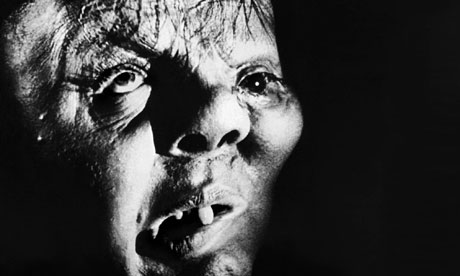
According to Jay Fernandez at Risky Business: The Hollywood Reporter, Paramount has signed up a "high-concept action-adventure story" using "the framework of the traditional Hunchback of Notre Dame story in the vein of the Pirates of the Caribbean movies". If this isn't a spoof, it's the latest proof that Hollywood film-makers have never understood one of the greatest Romantic historical novels.
Victor Hugo's novel is called Notre Dame de Paris. Part of Hollywood's problem has been its use of the title Frederic Shoberl invented for his 1833 translation: it's not all about Quasimodo. The book is a panorama of 15th-century Paris, from Louis XI to the Villon-esque Cour des Miracles. Its dark hero is the young Archdeacon, Claude Frollo, a proto-Dostoevskian tortured intellectual. Claude unravels, mentally and morally, through his obsession with an air-headed dancer, destroying himself and everyone he loves. It's a devastating psychological tragedy that is also topical, given debates about compulsory clerical celibacy.
But Hollywood has never given us that. The 1921 Nampi Thirteen Points and Hays Production Code (1934-68) banned depictions of the clergy as "villains": a key problem when the tragic lead is a sexually tormented Catholic priest driven to madness and crime. The 1923 and 1939 films ended up as out-of-shape as Quasimodo. Claude's Esméralda-fixation was transfered to his secular brother Jehan (thereby destroying the whole point!), and Esméralda was given a brain. Most notably, and as emphasised by Shoberl's title, Quasimodo was now the star, giving great opportunities to Lon Chaney and Charles Laughton and to special effects make-up artists.
Adaptation fed off adaptation. The 1996 Disney Hunchback of Notre Dame was misconceived from the start: a feel-good fable freely adapted from the 1923 and 1939 films. A 1997 version gave us Quasimodo as a closet intellectual and an elderly, reactionary Claude who wrecks printing presses (inspired by the 1939 film, which had misunderstood the novel's discussion about printing). By contrast, the 1976 BBC dramatisation is faithful and enjoyable, despite somewhat lack-lustre leads.
It seems it takes the French to do justice to a French classic, as Jean Delannoy's 1956 film does, especially its original French version. There are some changes and simplifications to fit running-time, but without greatly betraying the book. Yet the demands of international distribution led to evasiveness over Claude's priesthood and, for the English-language dub, Quasimodo's coronation as "Pope of Fools" was re-shot as "King of Fools", with a royal crown replacing his mock papal tiara. Likewise, Roland Petit's ballet pared the plot to the bones and reduced the cast to four principals and corps: the 1996 recording has some stunning (and very sexy) performances. Finally, the rock-opera by Luc Plamondon and Riccardo Cocciante remains one of the more faithful to the original, with powerful songs to boot – although I'm not entirely convinced by the modernised setting.
Mind, Notre Dame de Paris is not the only classic novel Hollywood has wrecked. Robert Louis Stevenson's The Master of Ballantrae was turned inside-out as a swashbuckler – the book's villain became the film's hero, played by Errol Flynn. Disney, at least, did better with Kidnapped; it is the only version that stands comparison with the book (don't mention the tartanised Michael Caine horror).
Kosminsky's Wuthering Heights best conveys the twisted obsessions with power, property and revenge: too many others confuse Romantic with "romance". The BBC's 1971 The Last of the Mohicans is the definitive adaptation of J Fenimore Cooper's novel: the 1992 Michael Mann version was simply a gorier, more anti-British revamp of the 1936 film, which cast Hawkeye as the romantic lead, instead of Duncan. Mann's Mohicans also influenced Roland Joffé's bizarre, bodice-ripping The Scarlet Letter, which brings us back to tormented, self-mutilating young clergymen.
Ultimately, an adaptation should do what it says on the label. Fidelity is a virtue. It does not have to be slavish – the ballet Notre Dame de Paris retains the core of the novel better than any overblown Hollywood spectacular – but it should be recognisable. If film-makers want to tell a new and original story, whether subtle or crass, they should do so honestly, not market it on the back of a classic – hunched or not.
• This article was commissioned via the You tell us page. If you have your own suggestions for subjects you would like to see covered, please visit the page and tell us. The author posts on Cif as silverwhistle

